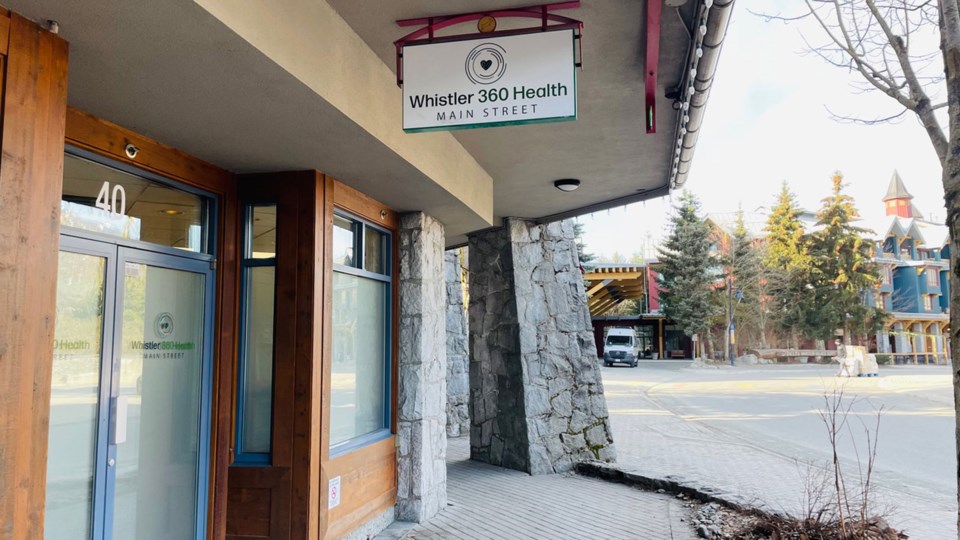A new report from Whistler 360 Health shows how the shift to a primary care model has paid dividends for a resort community that has struggled for years to connect patients with family doctors.
As of May 31, Whistler 360 had attached more than 10,000 patients to care, up from about 6,000 when the society first launched.
“We keep pushing to see if there are more people that want it, and we now have the provincial registry and our own list as well,” said Carol Leacy, board chair of Whistler 360 and 2024 Citizen of the Year. “We’ve worked our way through most of the people who have come directly to us and we’re still taking on patients, but certainly the big rush has stemmed.”
Emerging out of a Primary Care Task Force formed in 2019 to assess the impacts of Whistler’s family doctor shortage, Whistler 360 has completely transformed how primary care is delivered in the community. Ultimately landing on a non-profit model that took the day-to-day administration of a traditional family practice out of the hands of physicians so they could spend more time on patient care, Whistler 360 merged with the resort’s sole remaining family practice, the Whistler Medical Clinic, on Jan. 1, 2023.
“One of the things we hear from from the doctors is it used to be very stressful and there was a lot of saying no to people. ‘No, we don’t have any appointments,’ or, ‘We’re not taking on new patients,’ and it’s tiresome to have to always say no. So, the fact they can attach new patients and fit people in makes a world of difference,” Leacy said.
With the new model, as well as expanded space, both at the Whistler Medical Clinic (renamed the Whistler 360 Health Primary Care Clinic), and its satellite location on Main Street, the society has been able to recruit and retain several new primary care practitioners to the resort. Currently, Whistler 360 counts 10.75 full-time-equivalent physicians and nurse practitioners, up from 8.5 last year. It also employs 10 administrative staff. That’s on top of the 5.25 full-time-equivalent physicians employed at Creekside Health, with another slated to join the clinic in April. That will bring Whistler’s total number of full-time-equivalent physicians and nurse practitioners to 17, one more than the number the task force deemed was necessary to meet the community’s needs when it was formed in 2019.
Even against the society’s ambitious goals, the recruitment efforts have exceeded expectations.
“It’s just coming up on two years in January and I don’t think any of us expected we would be able to add as many doctors and nurse practitioners as we have,” said Leacy. “When we look back at our original projections, we were hopeful to get to this number in five years, not in two.”
Another core tenet of Whistler 360’s mission that has helped in recruitment efforts is its team-based longitudinal care model that brings different care providers under one roof.
“Everyone seems very happy. Judging it by how the doctors and nurse practitioners are doing, we’ve had very positive feedback from them,” said Leacy, who added Whistler 360 hasn’t seen any staff turnover in its two years of operations.
The society’s model is freeing up space at Whistler’s urgent care centre as well. A study last year found that roughly 1,600 fewer patients had sought acute care at the Whistler Health Care Centre over a 12-month period because they can now access primary care through Whistler 360. That resulted in an estimated $650,000 in savings to the province.
Currently, the society is exploring the option of adding a registered nurse in practice to the team, which would “expand doctors’ capacity so they can see more people,” Leacy said.
Whistler 360 continues to push for additional space, whether within the Whistler Health Care Centre or in a standalone building. Leacy said the society has assurances from Vancouver Coastal Health that Whistler 360 will be considered in its future expansion plans as the regional health authority continues work on its long-term master plan for the corridor, expected late next year.






